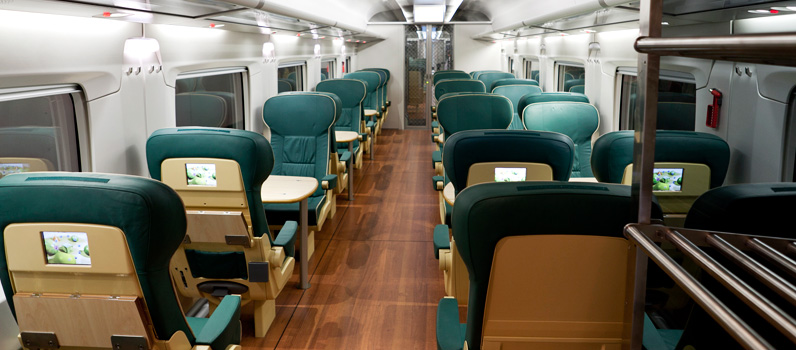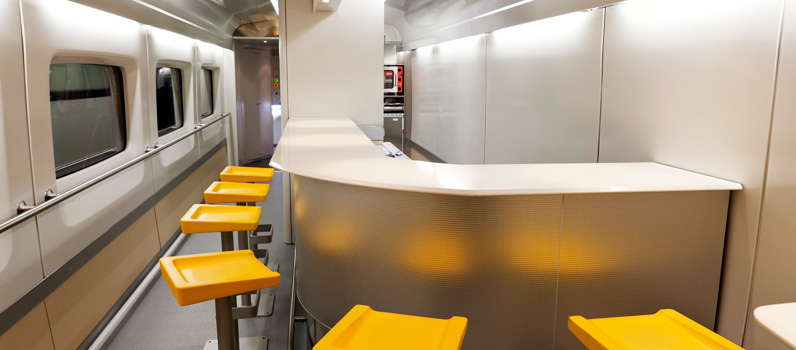Rail Study: Pushed as Safe as Pulled
The differences are so small, researchers say, that expensive new measures or banning rear-engine passenger trains aren't justified.
July 15, 2005|Dan Weikel | Times Staff Writer
A new federal study triggered by January's deadly Metrolink crash in Glendale shows there is little difference in safety between commuter trains pulled by locomotives and those pushed by engines from the rear.
The interim report by the Federal Railroad Administration states that push operations have slightly higher rates of derailment and fatalities.
But the researchers say the differences are so narrow that they don't justify expensive safety measures or eliminating push operations, a widespread practice in commuter rail.
"There are quite a few chances and very few derailments" in both cases, said Grady Cothen, a high-ranking safety administrator at the agency. Nevertheless, "we are continually working to improve safety and to reduce risk in the operating environment."
However, the study does state that when a crash occurs at a crossing or with another train, passengers in trains pushed by locomotives may be more vulnerable than people riding in cars behind an engine.
In push mode, a train is controlled from a cab car, a passenger coach at the front of the train with an engineer's station. The practice has come under intense scrutiny since the Glendale crash, which killed 11 people and injured 180 others Jan. 26.
That morning a Metrolink train with a cab car in front struck a sport utility vehicle and derailed. Its jackknifing cars hit a parked freight locomotive and another Metrolink train. In May, Juan Manuel Alvarez, 26, of Compton was ordered to stand trial on murder charges after he allegedly drove his SUV onto the tracks and triggered the wreck.
Some railroad experts say cab cars have a higher chance of derailing in a wreck and leave passengers more at risk in frontal crashes compared with trains pulled by heavier locomotives.
In the wake of the Glendale crash, Metrolink passengers and their relatives have sued the line, alleging that cab cars are unsafe. A group of rail commuters, led by the widow of Tom Ormiston, a conductor killed in the crash, is also conducting a petition drive demanding that Metrolink end push operations.
Rail officials counter that cab cars have provided millions of miles of accident-free travel since Metrolink began operations in 1992. The new federal report, they say, supports their contentions that push operations are safe.
"The statistics show there is a very small risk of an accident with a cab car," said David Solow, Metrolink's chief executive. "That doesn't mean we should not continue to work on crash avoidance."
Metrolink has had four major accidents in its history involving cab cars, including the Glendale crash; 15 passengers have been killed and more than 330 injured. In the two major crashes related to trains pulled by locomotives, 25 people were hurt, and no one was killed.
In their study, the researchers considered 446 crashes between commuter trains and motor vehicles at grade crossings from January 1997 to February 2005. Of 263 accidents involving trains pulled by locomotives, there was one derailment. Out of 183 collisions involving the push mode, two trains derailed.
There were no deaths and two injuries involving the derailment of the pull operation. There were 22 injuries and one death involving the push mode, all from a single Metrolink accident in Burbank in 2003.
The fatality rate for commuter rail services was 0.552 per billion passenger miles for push operations and 0.136 for pull operations, according researchers. If the Glendale crash is excluded, the rate drops to 0.184. In comparison, the fatality rate for automobiles is 8.283.
Researchers noted that over the study period, commuter trains traveled more than 374 million miles and made more than 3.4 billion passenger trips. Given the high mileage, researchers said, accident rates for all commuter service were extremely low.
Considering commuter rail and the Glendale accident, the study concluded that the chance of a push-mode train derailing in a grade-crossing collision was only 1.5% higher than a pull operation.
The difference, researchers said, "was not statistically significant."
The study cautioned that because the actual number of accidents was very low, there was not enough information to determine whether the pull mode was safer than the push mode. One serious accident, they said, could change the picture dramatically for either mode.








